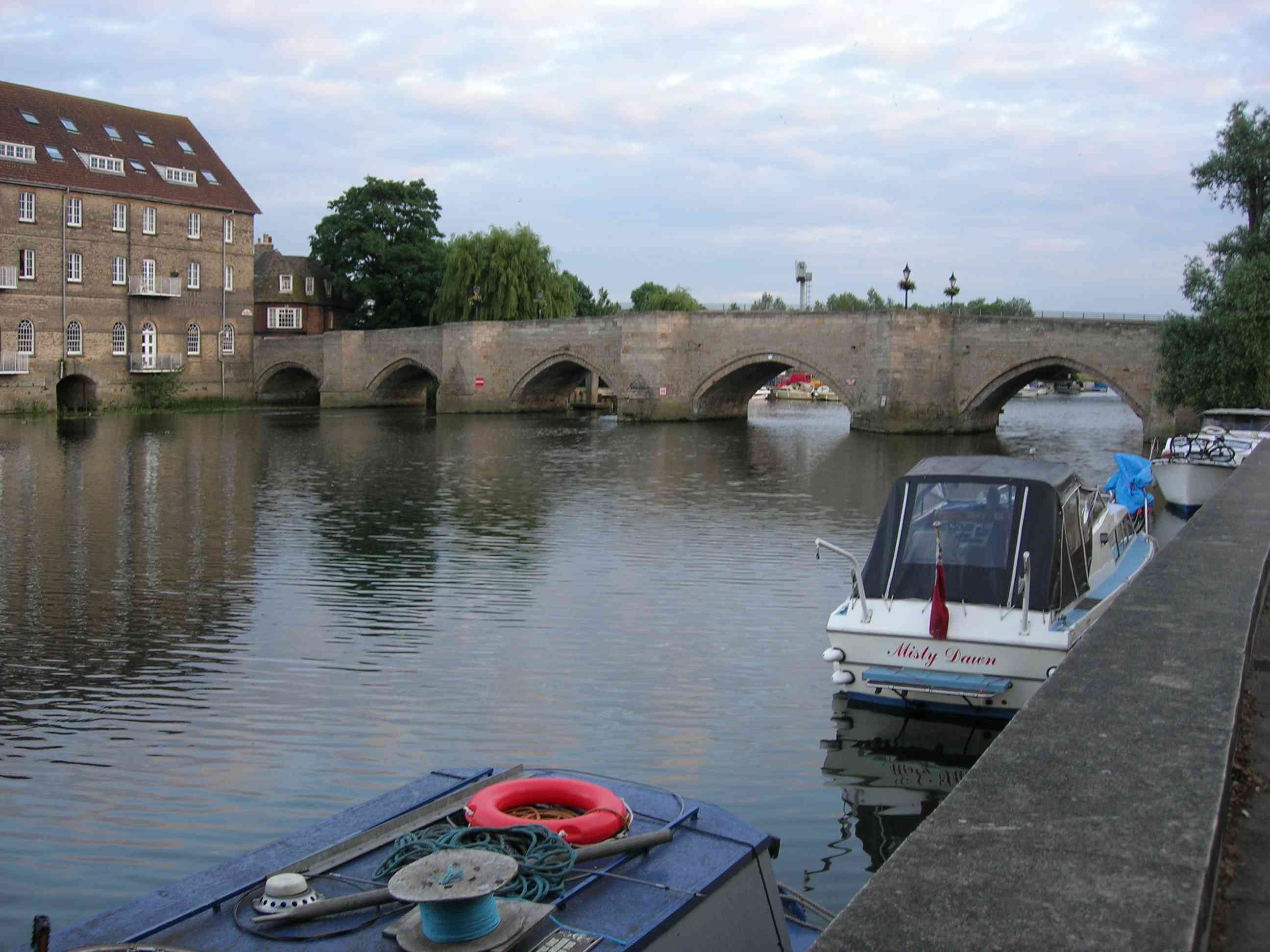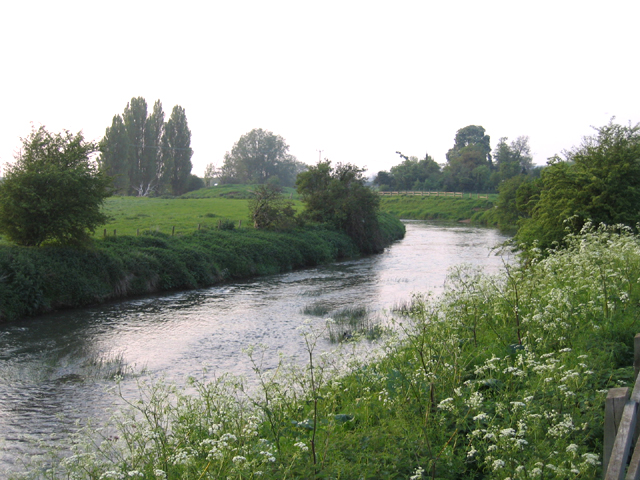|
Shefford, Bedfordshire
Shefford is a town and civil parish located in the Central Bedfordshire district of Bedfordshire, England. At the 2001 census it had a population of 4,928, and was estimated to have grown to 5,770 by 2007. The population at the 2011 Census had risen to 5,881. The town gives its name to Shefford, Quebec. History Roman remains were discovered in Shefford in the early nineteenth century. The labouring-class poet Robert Bloomfield (''the shoemaker poet'') died in Shefford after his publishers went bankrupt and Bloomfield was forced to move from London into a cottage rented to him by a friend. In Shefford one of his daughters died in 1814 and his wife became insane. In order to support himself he tried to carry on business as a bookseller but failed, and in his later years was reduced to making Aeolian harps which he sold among his friends. With failing eyesight, his own reason threatened by depression, he died in great poverty in the town in 1823. He was buried at Campton, ... [...More Info...] [...Related Items...] OR: [Wikipedia] [Google] [Baidu] |
Central Bedfordshire
Central Bedfordshire is a unitary authority area in the ceremonial county of Bedfordshire, England. It was created in 2009. Formation Central Bedfordshire was created on 1 April 2009 as part of a structural reform of local government in Bedfordshire. The Bedfordshire County Council and all the district councils in the county were abolished, with new unitary authorities created providing the services which had been previously delivered by both the district and county councils. Central Bedfordshire was created covering the area of the former Mid Bedfordshire and South Bedfordshire Districts.http://www.legislation.gov.uk/uksi/2008/907/note/made - The Bedfordshire (Structural Changes) Order 2008 The local authority is called Central Bedfordshire Council. Towns and villages Central Bedfordshire comprises a mix of market towns and rural villages. The largest town is Dunstable followed by Leighton Buzzard and Houghton Regis. Dunstable and Houghton Regis form part of the Luton/D ... [...More Info...] [...Related Items...] OR: [Wikipedia] [Google] [Baidu] |
World War II
World War II or the Second World War, often abbreviated as WWII or WW2, was a world war that lasted from 1939 to 1945. It involved the vast majority of the world's countries—including all of the great powers—forming two opposing military alliances: the Allies and the Axis powers. World War II was a total war that directly involved more than 100 million personnel from more than 30 countries. The major participants in the war threw their entire economic, industrial, and scientific capabilities behind the war effort, blurring the distinction between civilian and military resources. Aircraft played a major role in the conflict, enabling the strategic bombing of population centres and deploying the only two nuclear weapons ever used in war. World War II was by far the deadliest conflict in human history; it resulted in 70 to 85 million fatalities, mostly among civilians. Tens of millions died due to genocides (including the Holocaust), starvation, massa ... [...More Info...] [...Related Items...] OR: [Wikipedia] [Google] [Baidu] |
Chicksands
Chicksands is a village in the Central Bedfordshire district of Bedfordshire, England, and part of the civil parish of Campton and Chicksands, whose population in 2007 was estimated to be 2,510. By the 2011 census the figure was accurately placed at being 1,699. The village is on the River Flit and close to its parish village of Campton and the town of Shefford. Chicksands is mentioned in the Domesday Book the entry reads: ''Chichesana/e: William de Cairon from Bishop of Lincoln; Three freemen and Walter from Azelina, Ralph Tailbois' wife (it is of her dowry). Mill.'' Chicksands was the site of RAF Chicksands, an RAF station during World War II. The station was used by the United States Air Force from 1950 to 1995. It was the location for its first huge FLR-9 direction finding antenna from 1963 to 1995. The antenna was known as the 'Elephant Cage' and was dismantled before the USAF left in 1995. It is now home to the Joint Intelligence Training Group (JITG) and the Headquart ... [...More Info...] [...Related Items...] OR: [Wikipedia] [Google] [Baidu] |
Army Cadet Force
The Army Cadet Force (ACF), generally shortened to Army Cadets, is a national youth organisation sponsored by the United Kingdom's Ministry of Defence and the British Army. Along with the Sea Cadet Corps and the Air Training Corps, the ACF make up the Community Cadet Forces. It is a separate organisation from the Combined Cadet Force which provides similar training within principally independent schools. Although sponsored by the Ministry of Defence, the ACF is not part of the British Army, and as such cadets are not subject to military 'call up'. Some cadets do, however, go on to enlist in the armed forces later in life, and many of the organisation's leaders have been cadets or have a military background. The Army Cadet Force Association (ACFA) is a registered charity that acts in an advisory role to the Ministry of Defence and other Government bodies on matters connected with the ACF. The Army Cadets is also a member of The National Council for Voluntary Youth Services ( ... [...More Info...] [...Related Items...] OR: [Wikipedia] [Google] [Baidu] |
Boy Scout
A Scout (in some countries a Boy Scout, Girl Scout, or Pathfinder) is a child, usually 10–18 years of age, participating in the worldwide Scouting movement. Because of the large age and development span, many Scouting associations have split this age group into a junior and a senior section. Scouts are organized into troops averaging 20–30 Scouts under the guidance of one or more Scout Leaders or Scoutmasters. Troops subdivide into patrols of about 6–8 Scouts and engage in outdoor and special interest activities. Troops may affiliate with local, national, and international organizations. Some national Scouting associations have special interest programs such as Air Scouts, Sea Scouts, outdoor high adventure, Scouting bands, and rider Scouts. Foundation After the Second Boer War boys showed considerable interest in ''Aids to Scouting'', a book about military scouting and wilderness survival written by a hero from that war, Robert Baden-Powell. The book was also use ... [...More Info...] [...Related Items...] OR: [Wikipedia] [Google] [Baidu] |
Shefford Railway Station
Shefford was a railway station on the Bedford to Hitchin Line which served the town of Shefford in Bedfordshire, England. Opened in 1857, it gave more than a century of service before closing in 1962. History Shefford station was opened by the Midland Railway in 1857 as part of its line from Bedford to Hitchin, part of an original scheme to allow its Midland Main Line a direct route to London using the rival Great Northern Railway metals from Hitchin. When this did not work out, the Great Northern giving preference to their trains at the Hitchin junction, the Midland decided to build a new line south from Bedford to their new St Pancras station in London. This new section opened in 1868. This Passenger traffic over the Bedford to Hitchin section then became minimal and services were reduced to a shuttle by 1880. The section between Southill and Shefford was the only part to remain double-tracked after 1911. The station building differed from the others on the line in th ... [...More Info...] [...Related Items...] OR: [Wikipedia] [Google] [Baidu] |
Industrial Estate
An industrial park (also known as industrial estate, trading estate) is an area zoned and planned for the purpose of industrial development. An industrial park can be thought of as a more "heavyweight" version of a business park or office park, which has offices and light industry, rather than heavy industry. Industrial parks are notable for being relatively simple to build; they often feature speedily erected single-space steel sheds, occasionally in bright colours. Benefits Industrial parks are usually located on the edges of, or outside, the main residential area of a city, and are normally provided with good transportation access, including road and rail. One such example is the large number of industrial estates located along the River Thames in the Thames Gateway area of London. Industrial parks are usually located close to transport facilities, especially where more than one transport modes coincide, including highways, railroads, airports and ports. Another co ... [...More Info...] [...Related Items...] OR: [Wikipedia] [Google] [Baidu] |
Micro Brewery
Craft beer is a beer that has been made by craft breweries. They produce smaller amounts of beer, typically less than large breweries, and are often independently owned. Such breweries are generally perceived and marketed as having an emphasis on enthusiasm, new flavours, and varied brewing techniques. The microbrewery movement began in both the United States and United Kingdom in the 1970s, although traditional artisanal brewing existed in Europe for centuries and subsequently spread to other countries. As the movement grew, and some breweries expanded their production and distribution, the more encompassing concept of #Craft brewery, craft brewing emerged. A #Brewpub, brewpub is a pub that brews its own beer for sale on the premises. Producer definitions Microbrewery Although the term "microbrewery" was originally used in relation to the size of breweries, it gradually came to reflect an alternative attitude and approach to brewing flexibility, adaptability, experimentation an ... [...More Info...] [...Related Items...] OR: [Wikipedia] [Google] [Baidu] |
Hamlet (place)
A hamlet is a human settlement that is smaller than a town or village. Its size relative to a parish can depend on the administration and region. A hamlet may be considered to be a smaller settlement or subdivision or satellite entity to a larger settlement. The word and concept of a hamlet has roots in the Anglo-Norman settlement of England, where the old French ' came to apply to small human settlements. Etymology The word comes from Anglo-Norman ', corresponding to Old French ', the diminutive of Old French ' meaning a little village. This, in turn, is a diminutive of Old French ', possibly borrowed from (West Germanic) Franconian languages. Compare with modern French ', Dutch ', Frisian ', German ', Old English ' and Modern English ''home''. By country Afghanistan In Afghanistan, the counterpart of the hamlet is the qala ( Dari: قلعه, Pashto: کلي) meaning "fort" or "hamlet". The Afghan ''qala'' is a fortified group of houses, generally with its own co ... [...More Info...] [...Related Items...] OR: [Wikipedia] [Google] [Baidu] |
Sandy, Bedfordshire
Sandy is a market town and civil parish in Central Bedfordshire, England. It lies to the east of Bedford, to the south west of Cambridge and north of Central London. The town has a population of around 13,400 based on 2015 estimates. The A1 road bypasses the town to the west, with the East Coast Main Line running to the east. The area surrounding the town is dominated by a range of low hills known as the Sand Hills with the River Ivel running through the town. The headquarters of the Royal Society for the Protection of Birds (RSPB) is on the outskirts of the town, having moved to The Lodge in 1961. The Shuttleworth Collection is also nearby, around south west of Sandy. History An archaeological dig in May 2006 revealed that the area may have been settled earlier than 250 BC. However, Sandy was a Roman settlement and was probably an important trading centre and staging post in the Roman era. An ancient hill fort, now heavily wooded and traditionally known as Caesa ... [...More Info...] [...Related Items...] OR: [Wikipedia] [Google] [Baidu] |
River Great Ouse
The River Great Ouse () is a river in England, the longest of several British rivers called "Ouse". From Syresham in Northamptonshire, the Great Ouse flows through Buckinghamshire, Bedfordshire, Cambridgeshire and Norfolk to drain into the Wash and the North Sea near Kings Lynn. Authorities disagree both on the river's source and its length with one quoting and another . Mostly flowing north and east, it is the fifth longest river in the United Kingdom. The Great Ouse has been historically important for commercial navigation, and for draining the low-lying region through which it flows; its best-known tributary is the Cam, which runs through Cambridge. Its lower course passes through drained wetlands and fens and has been extensively modified, or channelised, to relieve flooding and provide a better route for barge traffic. The unmodified river would have changed course regularly after floods. The name ''Ouse'' is from the Celtic or pre-Celtic *''Udso-s'', and probably ... [...More Info...] [...Related Items...] OR: [Wikipedia] [Google] [Baidu] |
River Ivel
The River Ivel is a north-flowing river in the western part of east of England. It is primarily in Bedfordshire; it is a tributary of the River Great Ouse and has sources including in the Barton Hills. Course The river Ivel has four headwaters of equivalent size. By settled convention its name is given frequently to the lower part of the Flit in the south-west and all of its separate south-east headwater which rises in the north of the parish of Baldock in the far north of Hertfordshire. The rest of its course and catchment area is in Bedfordshire. It flows through the parishes of Stotfold, Arlesey, Henlow, Langford, Biggleswade, Sandy and Blunham. It joins the Great Ouse at Tempsford. The total length is about . Tributaries *The River Hiz joins beside Champneys Henlow, one of four resort hotels. *The Flit joins the Ivel on the western boundary of Langford and its adjoining Ivel Navigation continuation to Shefford, Bedfordshire has meant the lower Flit is frequently l ... [...More Info...] [...Related Items...] OR: [Wikipedia] [Google] [Baidu] |









